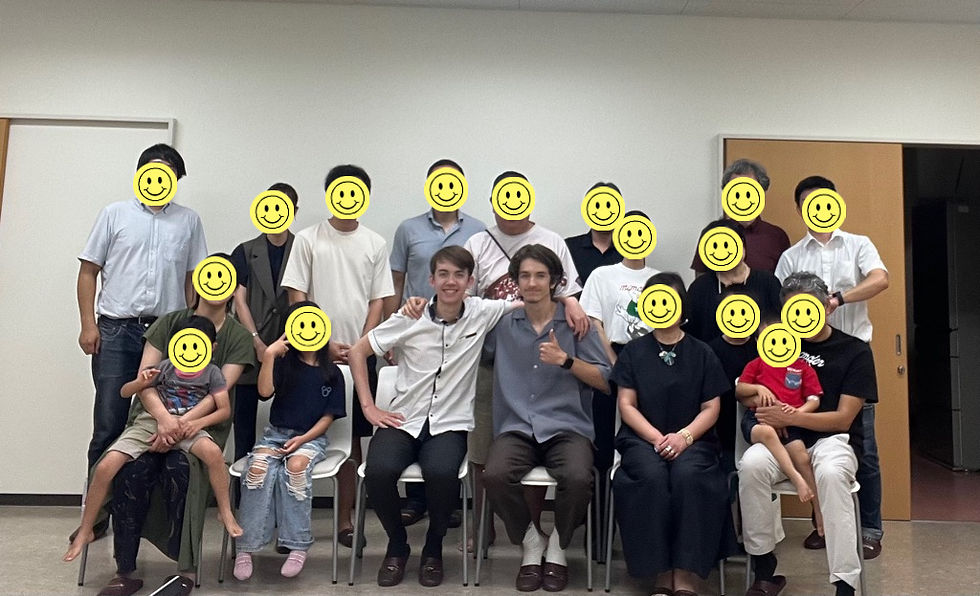What is Ibara like?
- Ibara CIR

- Apr 19, 2024
- 4 min read
Updated: May 17, 2024
井原市はどんな場所ですか?
Ibara is small.
井原市は小さいです。
When I was assigned to Ibara from the JET Program, I would be lying if I said I didn’t have serious reservations. As a city girl hailing from the UK’s second biggest city, the idea of moving to a town, ahem, city of 40,000 people was inconceivable. Further research suggested that over half of those people were families, leaving a very meagre percentage of young(ish) people around my age. JETプログラムから井原市に配属されたとき、私はかなりの不安を抱いていました。イギリスの2番目に大きな都市出身の都会っ子として、4万人の町、いや、市に移動するという考えは信じられませんでした。さらなる調査では、その半数以上が家族であり、私と同じような若い(まあ、若いとは言えないかもしれませんが)年齢の人々の非常にわずかな割合しか残っていないことが示唆されました。
We all know of Japans aging population and falling birth rates and going to Ibara seemed like moving to the epicentre of it all. I had visions in my mind of essentially moving to a retirement village, surrounded by fields with nothing to do and full of Japanese octogenarians who looked suspiciously at the black British foreign woman in their midst.
日本の高齢化と出生率の低下を皆さんご存知ですし、井原に行くことはまるでそれらの中心地に移動するようなものでした。私の頭の中には、実質的にはリタイアメントビレッジに移り住むことになり、何もすることがなく、周りを囲むのは日本の八十歳の人々で、彼らは黒いイギリスの外国人女性を疑いの目で見つめるだろうという幻想がありました。
There wasn’t even a Mcdonald’s for heaven’s sake!
I wasn’t entirely sure how I’d even make it a year.
マクドナルドすらなかったのです!
私は1年間どうやって過ごすか、完全にはわかりませんでした。
Almost 2 years later, I look back and laugh at my apprehension. There is no mistaking Ibara for a large city, but you can arguably say that this is what makes it great.
ほぼ2年後、私は自分の不安を振り返って笑います。井原市は大都市とは見間違えることができませんが、それが井原市を素晴らしいものにしていると言えるかもしれません。
Ibara is the true Japanese countryside.
Not high tech Tokyo, with Akihabara and robot waiters.
Not revered Kyoto, a veritable mecca of preserved Japanese history.
井原は真の日本の田舎です。
高度なテクノロジーの東京ではなく、秋葉原のロボットウェイターもありません。 尊敬される京都でもなく、保存された日本の歴史の宝庫です。
It’s just a city. In the countryside. With normal people, living normal lives.
And while that might sound boring to some, in a way this is exactly its charm.
田舎の中にただの街です。普通の人々が普通の生活をしています。 そして、一部の人々には退屈に聞こえるかもしれませんが、ある意味でこれが魅力なのです。
How many people go to a country, see the top 3 tourist destinations and declare “I know X country, I’ve been to Y”. They see the crème de la crème, the places which have been painstakingly curated and presented to them in order to give them exactly what they think that country should be like (what a mind-twister that sentence was). I get it; you’re on a budget and you want to see the best stuff you can in the limited time you have. But is that really what that country is like?
どれだけの人がある国に行って、トップ3の観光名所を見て、「私はX国を知っている、Yに行ったことがある」と宣言しますか?彼らは、国がどのようなものであるかを正確に伝えるために丹念にキュレーションされ、提示された場所、つまりその国がどのようになるべきかという人々の考えに合致するものを見ています(すみません、この文章はかなり混乱しています)。
私も理解しています。予算が限られていて、限られた時間でできるだけ良いものを見たいのです。しかし、それが本当にその国の姿なのでしょうか?
Do British people have afternoon teas and visit Buckingham palace every day?
(the answer here is no, if you weren’t sure)
イギリス人は毎日アフタヌーンティーを飲んでバッキンガム宮殿を訪れるのでしょうか? (もし分からなかったら、ここでの答えは「いいえ」です、)
For sure, Tokyo and Kyoto and Hiroshima are excellent places to visit, but the fact is, everyone goes there.
Which is why I am daring you to be different.
確かに、東京や京都、広島は訪れる価値のある場所ですが、実際には誰もがそこに行きます。 だからこそ、私はあなたに違うことを試してみることをお勧めします。
So venture off the beaten path (not too far mind you - Ibara is on the way to Hiroshima, just so you know), take a chance on the unknown and see what a normal Japanese city is really like.
既成の道を外れて(あまり遠くには行かないでください - 井原市は広島への途中にあるので)、未知のものにチャンスを与えて、普通の日本の街が本当にどんなものか見てください。





Comments